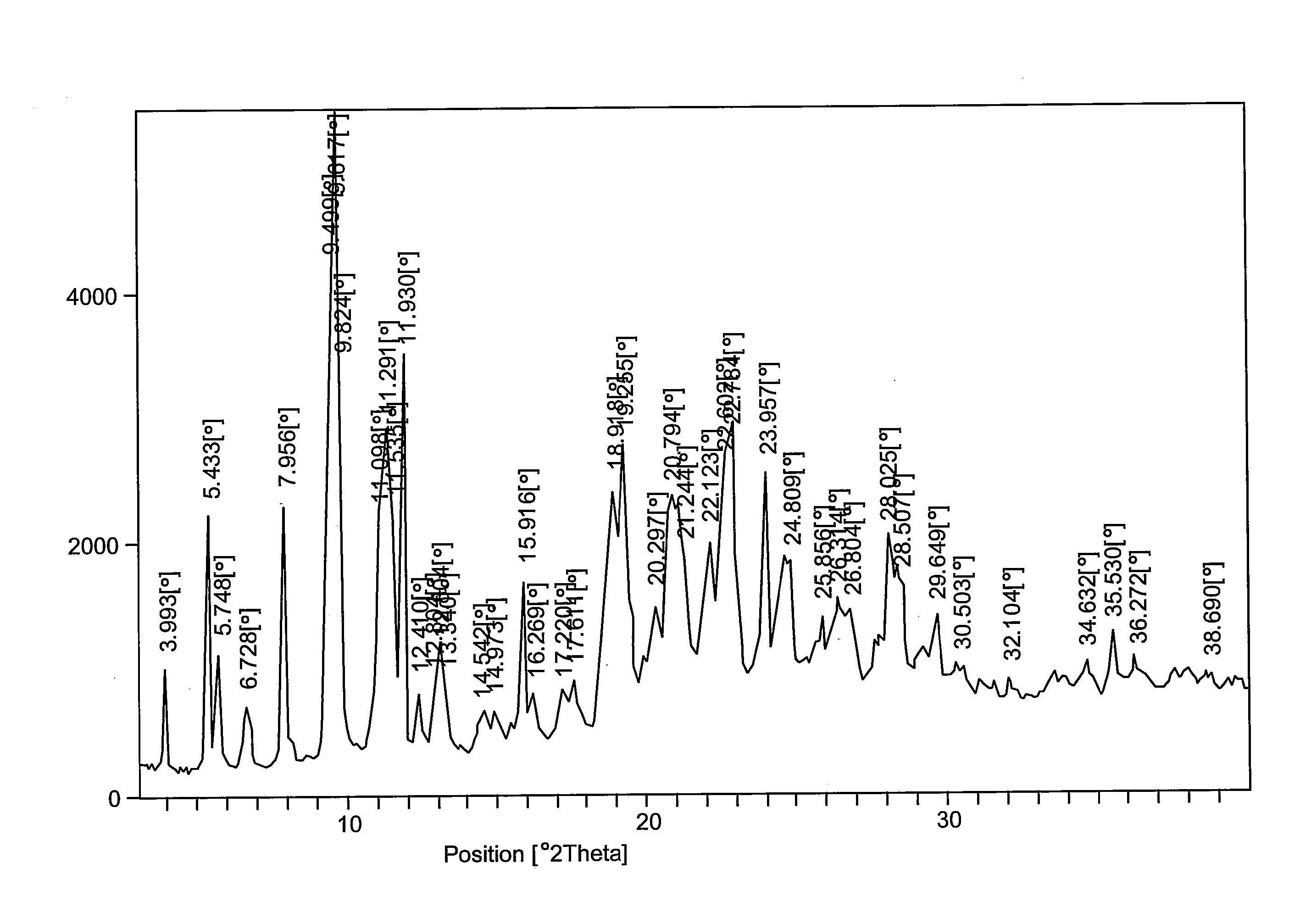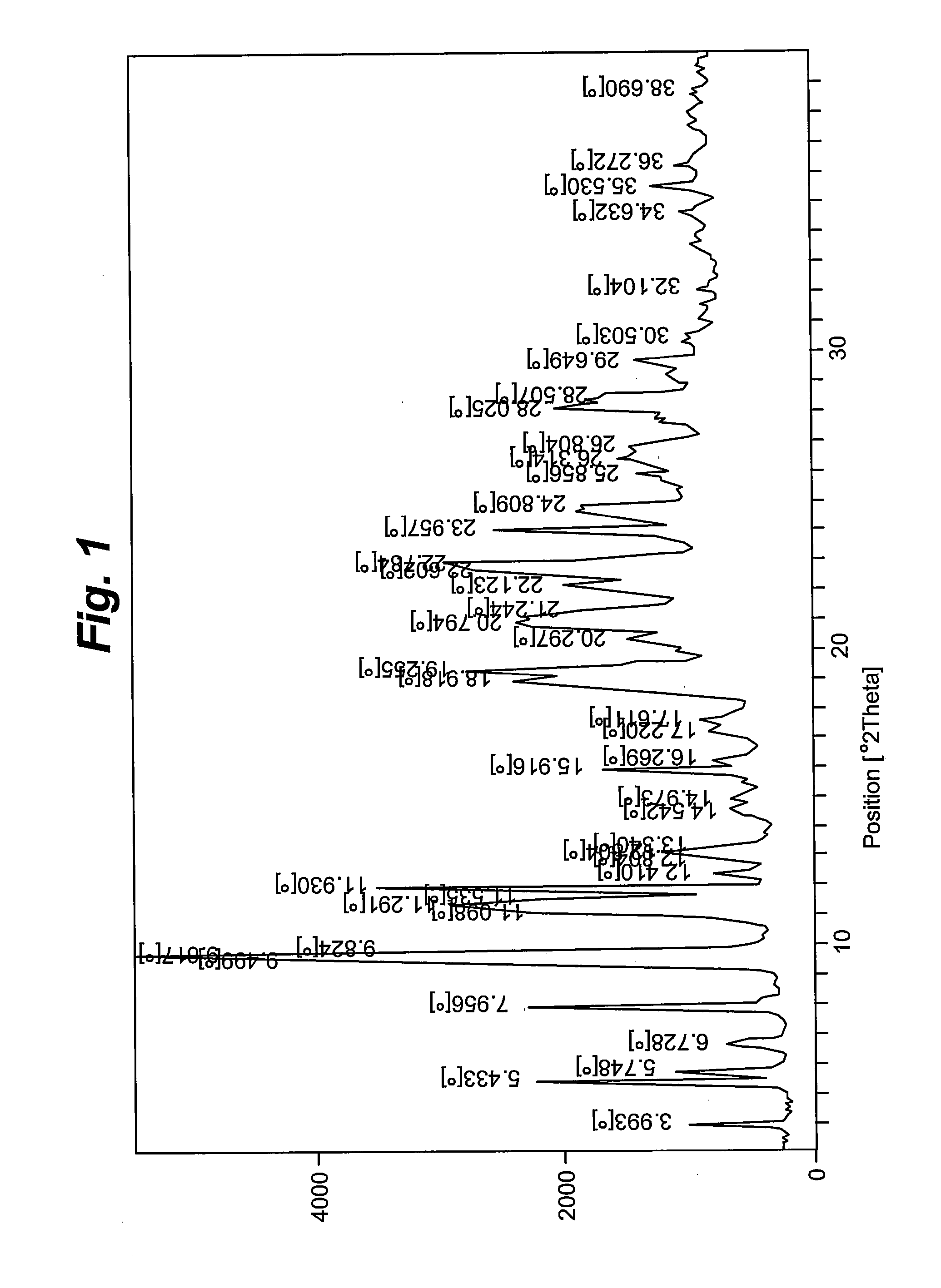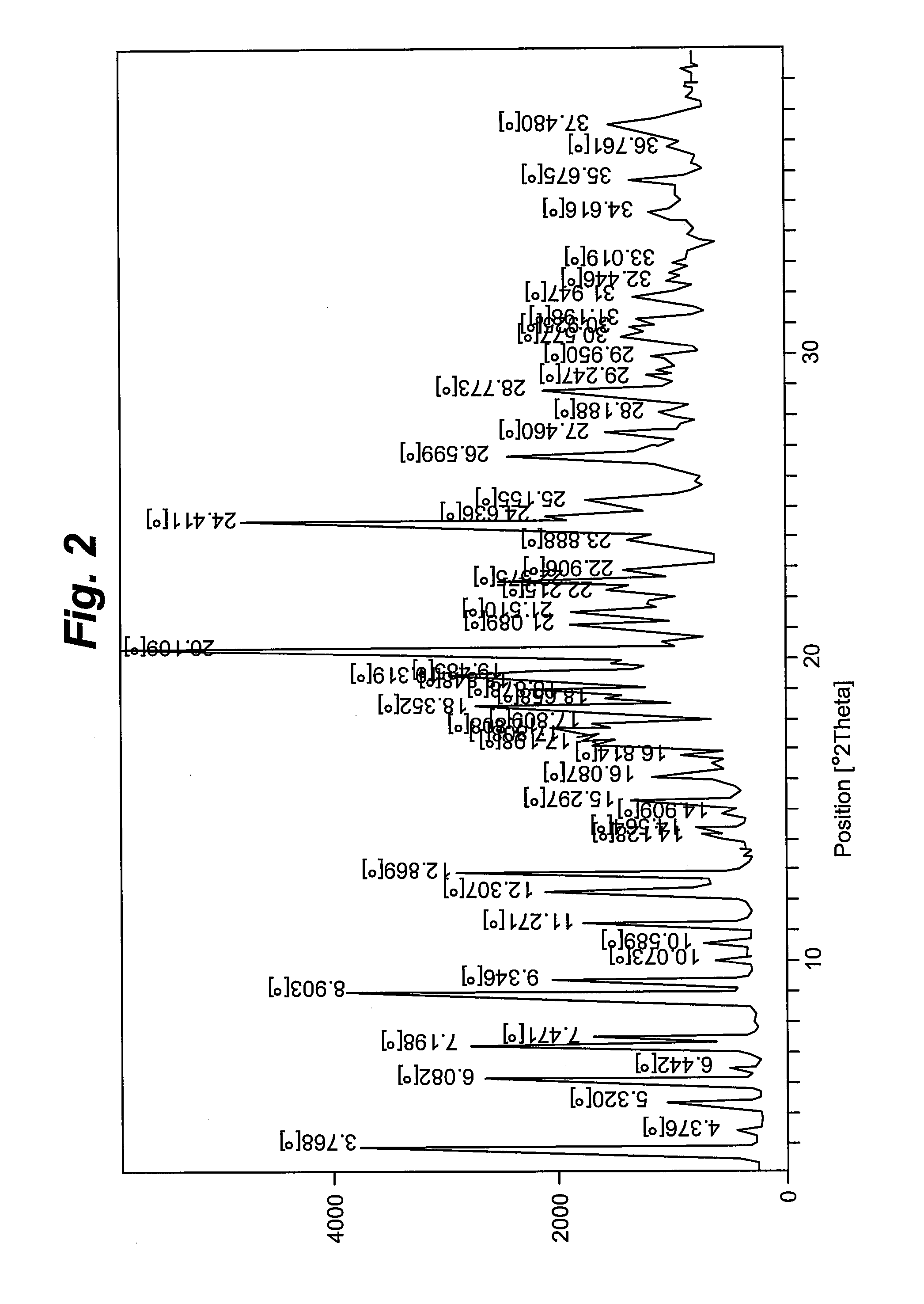Polymorphic Forms of an HMG-CoA Reductase Inhibitor and Uses Thereof
a reductase inhibitor and polymorphic technology, applied in the field of new forms of hmgcoa reductase inhibitors, can solve the problems of difficult use in formulating a pharmaceutical preparation containing this compound, and the difficulty of long-term storage of amorphous compounds, and achieve good thermal stability and solubility characteristics
- Summary
- Abstract
- Description
- Claims
- Application Information
AI Technical Summary
Benefits of technology
Problems solved by technology
Method used
Image
Examples
example 1
Preparation of Crystalline Polymorphic Form I
[0072]Referring to FIG. 13, a compound of Formula II was hydrolyzed using sodium hydroxide to form the sodium salt in situ, which was in the aqueous layer. This aqueous layer was extracted with ethyl acetate to remove any impurities. The aqueous layer containing the sodium salt was reacted with calcium acetate at room temperature under stirring to form the precipitate of compound of Formula I. To the reaction vessel an equal amount of ethyl acetate was charged and the reaction mixture was heated to reflux under stirring to dissolve all the precipitated compound of Formula I. The hot solution was filtered and allowed to cool to about 25° C. to about 30° C. under stirring and continued to stir for about 4 to 5 hours. The product was then filtered, washed with ethyl acetate and deionized water and unloaded for drying. The product was dried for about 10 hours to about 12 hours at about 60° C. in a vacuum tray dryer to give the desired crystal...
example 2
Preparation of Crystalline Polymorphic Form I
[0073]The well suspended amorphous form of the compound of Formula I (75 gm) in ethanol (375 mL, 5 times) was heated at about 50° C. to about 55° C. until a clear solution was obtained. Deionized water (375 mL, 5 times) was added to cool the solution to room temperature, and the solution was heated to about 50° C. to about 55° C. for about 1 hour. The milky white solution was then allowed to cool to between about 25° C. to about 30° C. and stirred for about two and half hours. Further, deionized water (375 ml, 5 times) was slowly added and stirred for about half an hour. The solid was filtered, washed with deionized water and hexane, and dried under vacuum at about 55° C. to about 60° C. for about 10 to about 12 hours to form crystalline polymorphic Form I. Diffraction angles and relative intensities for the X ray diffraction patterns of Form I are shown in Table 1.
TABLE 1XRD diffraction pattern of Form I (Ethyl acetate:Water, 1:1)S. No.D...
example 3
Preparation of Crystalline Polymorphic Form II
[0074]The amorphous form (3.0 gm) was dissolved in fifty percent acetonitrile in water (36 mL, 12 times) at refluxing temperature under stirring. The solution was again stirred for about 0.5 hour at reflux temperature. The hot solution was cooled to between about 25° C. to about 30° C. and stirred for 8 to 10 hours, filtered, washed with deionized water, and dried under vacuum for about 10 to about 12 hours at about 55° C. to about 60° C. to form crystalline polymorphic Form II. Diffraction angles and relative intensities for the X ray diffraction patterns of Form II are shown in Table 2.
TABLE 2XRD diffraction pattern of Form II (acetonitrile:water, 1:1)S. No.Diffraction angle (2θ°)Intensity (I / Io)13.7663.8525.3214.8436.0843.7147.1946.5258.9065.2369.3432.36711.2726.66812.3032.96912.8646.521015.2918.511116.1817.791217.6230.601320.161001421.0826.471521.5126.641622.5724.551724.4177.941824.6329.261925.1523.132026.5935.242128.7727.982235.6711...
PUM
 Login to View More
Login to View More Abstract
Description
Claims
Application Information
 Login to View More
Login to View More - R&D
- Intellectual Property
- Life Sciences
- Materials
- Tech Scout
- Unparalleled Data Quality
- Higher Quality Content
- 60% Fewer Hallucinations
Browse by: Latest US Patents, China's latest patents, Technical Efficacy Thesaurus, Application Domain, Technology Topic, Popular Technical Reports.
© 2025 PatSnap. All rights reserved.Legal|Privacy policy|Modern Slavery Act Transparency Statement|Sitemap|About US| Contact US: help@patsnap.com



